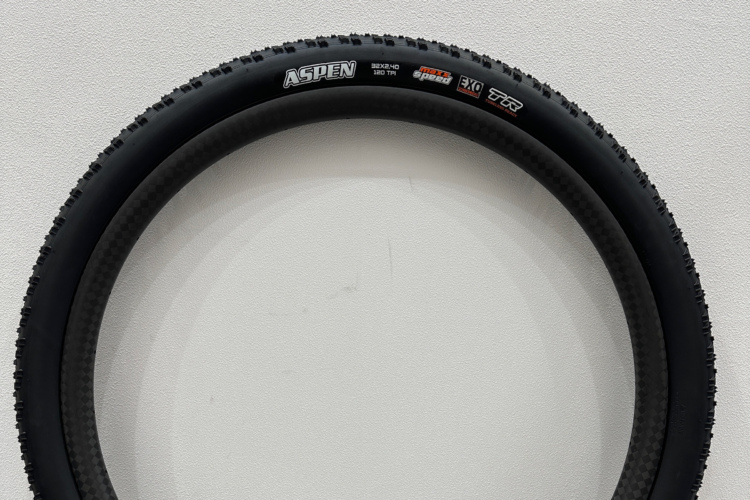
It’s great to get some new threads every once in a while to spruce up the trail outfit with better tech for a comfortable ride. We write loads of gear reviews with the hope of helping that selection process along. Across the sea of MTB apparel brands, there are several that tout the “sustainability” of their goods, and it’s not always clear what they mean by that term, nor how effective their methods are at curbing our planet’s burgeoning climate crisis.
What do sustainability certifications actually do to slow melting Polar ice caps, the resulting rising sea levels, or to reduce toxic greenhouse gases? What else are companies doing to reduce their impact on the earth?
To begin answering those questions, we sat down with Climate Neutral CEO Austin Whitman and asked “what are the most effective methods that an environmentally-responsible company can use to fight the climate crisis?” Climate Neutral is a non-profit organization that works with manufacturers to analyze their business and production practices and to certify their goods once they chop their climate footprint. According to a statement on their website, “Climate Neural works to decrease global carbon emissions by getting brands to measure, offset, and reduce the carbon they emit. We believe consumers and brands must work together to drive the world toward the zero net emissions future that science tells us we urgently need.”
Before we traipse through the woods with Whitman, a little context is in order. According to an article on United Nations News, “the fashion industry is considered by the UN Conference on Trade and Development (UNCTAD), to be the second most polluting industry in the world.” Second to the oil industry that is. Mountain bike apparel (and gear) is undoubtedly included in that figure, and a lot of our high-tech apparel is made with or from petroleum.
The next time you’re thirsty on a long adventure, consider that “It takes around 7,500 liters of water to make a single pair of jeans, equivalent to the amount of water the average person drinks over a period of seven years.” Is anyone else thinking of the Iroquois philosophy that every human decision should consider the next seven generations when they read that statistic on jeans manufacturing? You can check out the UN Fashion Alliance site for further research, proposed solutions, and stories about current action.
To start off our discussion, Whitman drew some clarity around “sustainability” statements and climate. “It’s astounding how many companies have had sustainability strategies, reports, whatever you want to call it, and have not thought a bit about climate. In a way, that’s the problem we’re trying to address. Even companies that have been publishing complex sustainability reports have no clear action or communication plan with their consumer base, who is increasingly concerned with climate change. Our hope is that by incorporating our label, and by getting our certification we can get companies to push that discussion forward with their customers, and also push internal initiatives forward on climate.”
Whitman goes on to say that sustainability more broadly has brought forth some good things, with the Sustainable Apparel Coalition leading the charge, yet the term itself covers a vast array of fields and topics, including chemical use, toxicity, worker safety, and material end-of-life, among other factors. Whitman adds that “most sustainability does not take climate into account in a clear way. There are people who have invested the time in building out sustainability strategies but haven’t invested the time in trying to understand how they contribute to climate change. That’s what we’re trying to do. To give companies a turnkey answer to how they can bolt on a climate strategy to their existing sustainability portfolio. Or, to give them a climate strategy starting from scratch, and that potentially will branch out into other metrics of sustainability.”
For brands to receive certification with Climate Neutral, they first have to measure the carbon emissions of their direct operations and their entire value chain, including the climate impacts of the goods and services they purchase. This of course includes employee travel, waste disposal, and all manner of things that relate to the company doing its business.

Whitman explains, “We think of it in fairly simple terms, as everything you do from making and delivering your products or service to your customers is counted. We count that by taking different operational metrics on your business and how much you’ve spent on certain materials and shipping. We tally that all up and get a footprint together. The reality is that you can’t do anything about that footprint today because that was last year’s footprint. Those emissions already happened. So, the best thing you can do is to invest in credible projects to remove or recapture those carbon emissions. A ton of carbon that I was responsible for creating in 2019 can, at best, be captured by planting a bunch of trees or doing a project around avoiding deforestation, or a project that involves renewable energy, or any other type of offset project. So that’s the way that you break even, as you will on your past emissions.”
From there, Carbon Neutral works with companies to reduce their footprint organically. Whitman says they work with brands that have already done everything to reduce their footprint as much as possible, and they’re looking for the final elements of waste in their systems, and others that have no clue where their emissions are coming from and they need to start from zero.
Climate Neutral isn’t focusing on consumer behaviors, like how often people replace or wash their mountain bike shorts or charge their cellular phones. Instead, they are centering energy on helping companies create the least waste and emissions possible. While we could take massive steps in a better direction with the climate crisis, via some overarching government policies, improving the earth’s climate does not seem to be a current priority for most of the planet’s superpowers. In lieu of those policy interventions, certification programs like Climate Neutral allow companies and consumers to work toward reducing emissions and consumption.
One example of a mountain bike apparel company that’s directly working to fight climate change is Endura, with their Million Trees Initiative. The brand is paying for a million trees to be planted around the globe annually. Their first planting this year saw 620,000 fresh mangroves in the soil of a Mozambique river delta that will not only generate oxygen and curb erosion but will help out the local fishing community in a variety of ways.
Pearl Izumi has also been taking great strides lately. They are aiming to make more and more of their apparel with recycled and organic fibers, with a target of 90% of their products being made from those materials by 2022. Pearl Izumi has also stopped publishing print catalogs, reduced hangtags, are shipping product in recycled plastic, and will repair damaged clothing to keep it in circulation.
Look for future articles on what companies and consumers can do for the earth.




















0 Comments